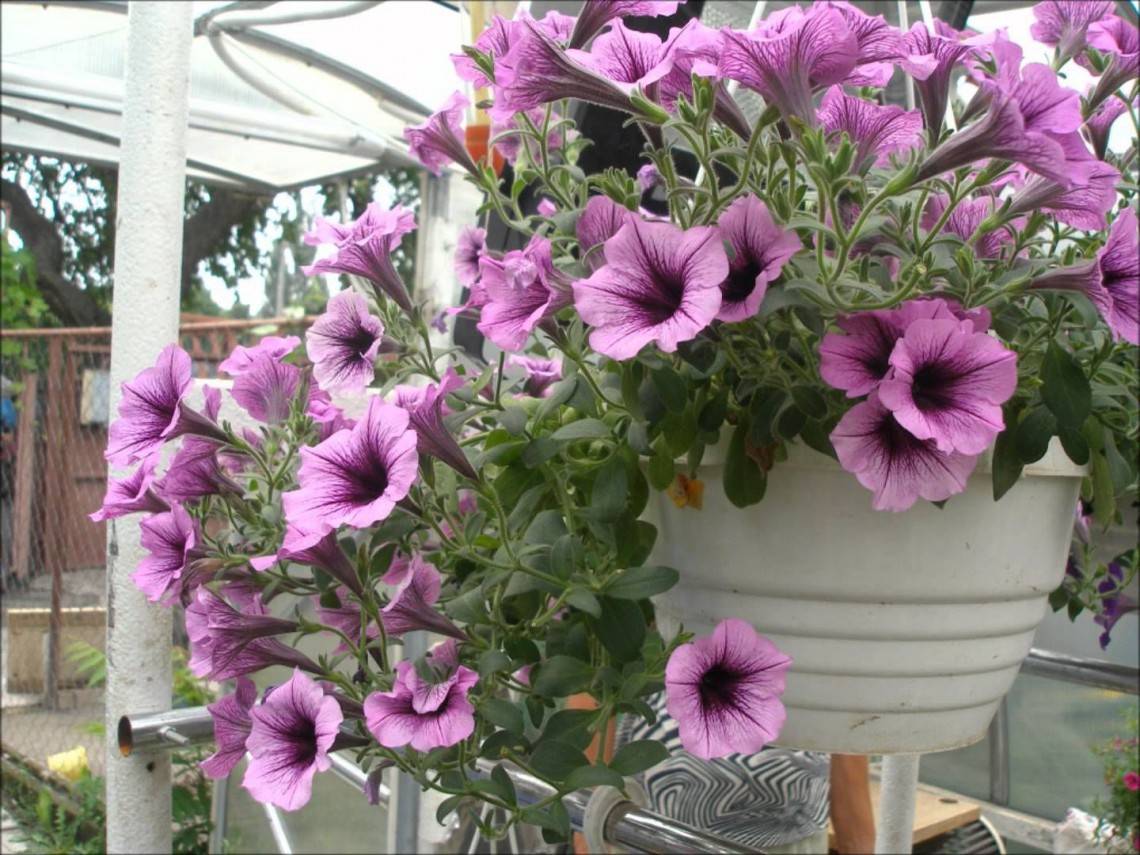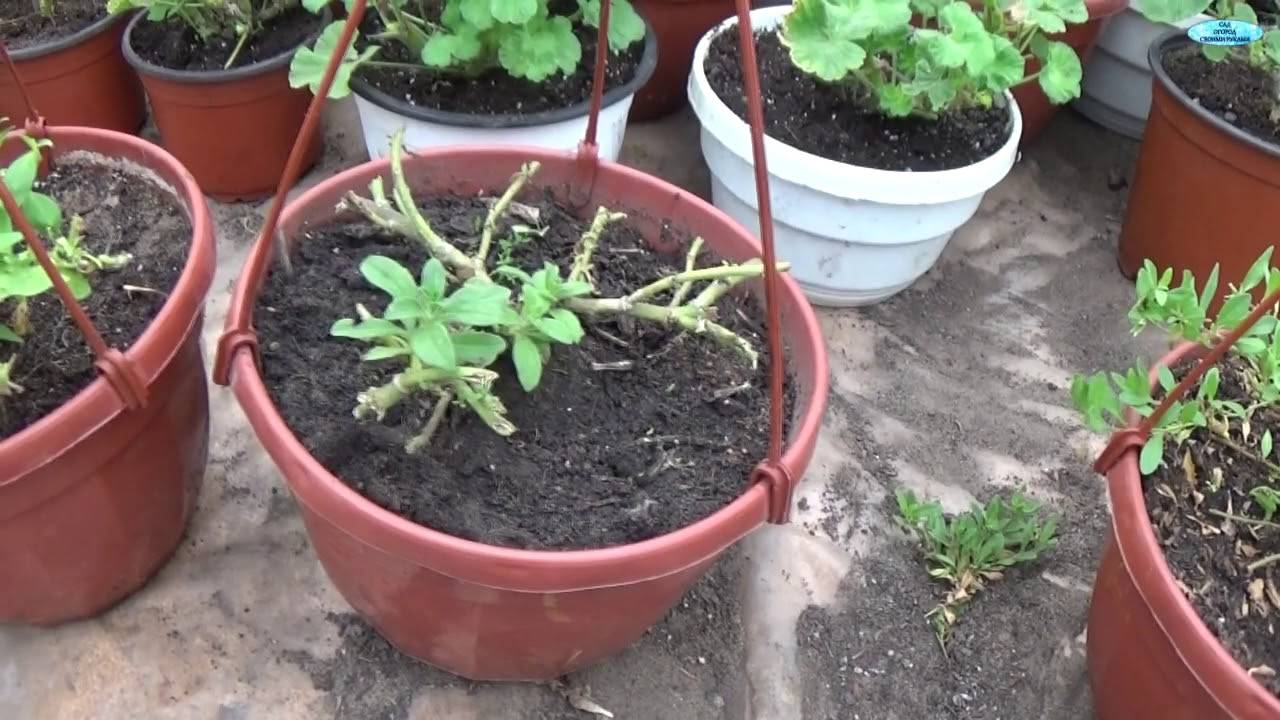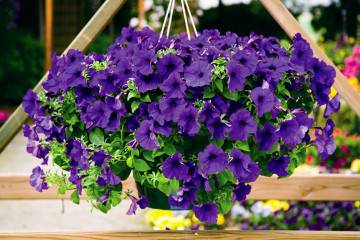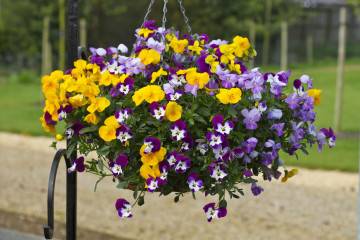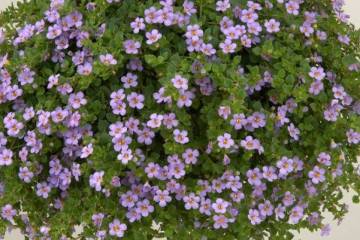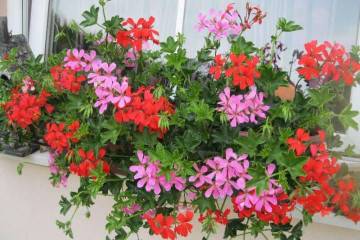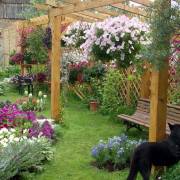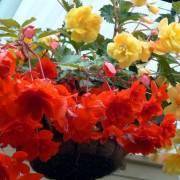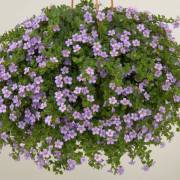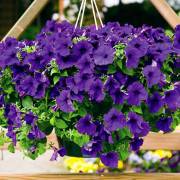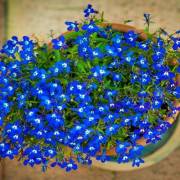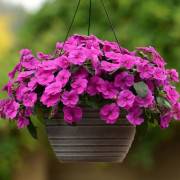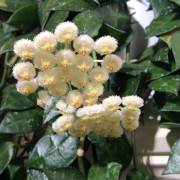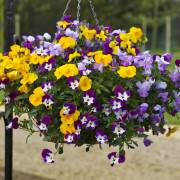How surfiniya differs from petunia - care and cultivation
Content:
Surfinia ampelous (or sulfinia) is a representative of the genus Petunia, bred by Japanese breeders. This is a thermophilic plant of extraordinary beauty, covered with a cascade of flowers of different shades. Flowerbeds, loggias, terraces look elegant until late autumn, while exotic surfiniia blooms.
Surfinia ampelous: care and cultivation at home
Every plant, garden or home, needs care. To admire the long and lush bloom of ampelous surfinia, you need to properly care for it. When growing a plant at home, you need to take into account its exotic features.
When grown at home, seedlings or cuttings are planted.
It is difficult even for experienced flower growers to grow surfiniya from seeds. The seeds are too small. Planting any plant begins with the selection of quality seeds.
The soil, garden or ready-made from the store, is calcined in the oven, disinfected. The land is needed loose, soft, fertilized.
Landing order:
- Several seeds are laid out superficially in a pot or box with moistened soil, and the container is covered with cellophane. If the seed is buried, then lightly sprinkle it with sand on top. With deep seeding, the seeds will not sprout.
- Sowing in rows, the distance between which is 5 cm, is very convenient. The row seeding scheme will provide the seedlings with ventilation.
- Surfinia seeds will sprout if the air temperature is at least 25 ° C.
- Sunlight should be soft, uniform, long-lasting (at least 12 hours).
- The soil is regularly sprayed, avoiding drying out and waterlogging. After 2 weeks, small sprouts will appear. It is difficult to grow seedlings from seedlings.
The film is not removed, creating greenhouse conditions. Further, they provide the seedlings with proper care. So that it does not stretch too much, the sprouts are taken to a room with an air temperature of 18-23 ° C.
After 1.5-2 months, when the seedlings grow up a little, they will become cramped and they will begin to shade each other, conduct a careful pick. With large volumes of growing seedlings, the plant is dived twice.
After each watering, light inter-row loosening is carried out. Moderate watering and loosening will help avoid diseases such as "black leg".
After picking, it is watered with a complex of mineral fertilizers, which contains a lot of phosphorus for the development of the root system and trace elements, for example, the Root.
Compliance with the rule of soil moistening: watering only after the soil has dried will help to avoid root rot. After watering, water should not overflow from the drain holes. If it does, then the overflow of the plant was allowed. Surfinia will turn yellow from an excess of moisture in the soil.
Once every 2 weeks, seedlings are fed with minerals, for example, nitroammophos. Dilute 20 g of the product in a bucket (10 L) of water. In parallel with root dressings, leaf dressings are carried out with the same frequency. For this, for example, Brexil is used.
To grow healthy and strong seedlings, you need the following conditions:
- air temperature 23-25 ° С;
- adherence to cycles: watering, drying;
- diffused sunlight;
- light loosening;
- mineral dressings: root, leaf.
It will take 3.5 months from the day of sowing the seeds to get small flowering bushes. Having sown seeds at the end of January, by April you can get plants, which are then transplanted into pots, hanging baskets. Flowers are taken out on terraces, balconies, outside when it's warm.
Sulfinia ampelous: care and cultivation at home from cuttings
The method of planting surfinia with cuttings, according to flower growers, is easier than growing from seeds. The procedure is as follows:
- Take the apical part 5-6 cm, cut off. Several lower leaves and peduncles are removed.
- The prepared cuttings are planted in cassettes filled with pure peat. First, the peat is moistened by immersing the cassettes in clean warm water, preventing water from flowing from above. The soil is moistened with water that flows through the drain holes from the bottom.
- Pencil depressions are made in the soil of the cassette cells. Each stalk is dipped in the preparation "Kornevin" (for 100% rooting of plants), lightly shaken off, lowered all the way into the hole, compacted.
- Cover with glass or foil, take it to the house. The room temperature should not fall below 22-23 ° C. Do not leave the cuttings in the sun.
After half a month, the cuttings will take root. They are transplanted into seedling glasses. Then it is poured with succinic acid (2 g per 10 l). The grown plants are then transplanted into pots, baskets, open ground.
What is the difference between care during the flowering season as opposed to the dormant period
In order for sulfinia to bloom before frost, look smart, please with lush flowering, you need to show a little care. To do this, observe the following rules:
- In time, faded flowers are removed along with the flower bag close to the stem, since seeds begin to form in it, which take a lot of nutrition from the plant.
- The watering regime is strictly observed: the flower must not be overdried. Even a one-time overdrying will lead to loss of buds. While new inflorescences are forming, the plant will look unsightly.
- Gardeners feed surfinia with each watering (10 g of nitroammofoska per 10 liters of water).
- Examine plants for pests and diseases. If the leaves turn yellow, some spots appear, then the flower is sick. The most dangerous enemy of sulfinia is aphids. Black small midges, sticky foliage are the vital activity of the pest. The flower needs insecticidal treatment.
If you follow these simple gardeners' recommendations, the flowers will bloom magnificently.
Wintering and dormant period
During the season, the plant depletes, weakens. The uterine flower is stored in cool rooms: underground, basement, equipped nurseries at a temperature of at least 6-7 ° C.
Before transferring to winter, the plant is cut off, wilted leaves and whips are removed. They are treated against diseases and pests with Redomil Gold with the addition of Teppike (insecticide).
During the dormant period, the plant "falls asleep". All life processes slow down: assimilation of nutrition, the work of roots. Water the plant occasionally (no more than 1 time per week) so that the roots do not dry out and die.
In nurseries in frosty conditions, the flowers are covered with spandbond, the room is heated. If there is no cool place, surfiniya can hibernate in a room at temperatures up to 20 ° C. The shoots will continue to grow, but slowly, they will be weak, thin.
By spring, the flowers wake up: foliage grows, buds form. The plant can be cuttings.
How surfiniya differs from petunia
At first glance, the plants are similar in appearance: in leaves, flowers. The difference is small, and an inexperienced grower may not distinguish between petunia and ampelous surfinia.
Among the varieties of petunias and sulfinia, there are luxurious ones with double flowers. A double flower requires more nutrition, so the flowering is not so abundant. In addition, double flowers do not recover well after strong wind or rain.
In petunias, lateral shoots are formed, and flower buds are formed at the end of the main stem. In ampel petunias, the stems grow up to 50-80 cm. They are constantly pinched so that new lashes form in the axils of the leaves all the time. Then the plant will be lush.
In sulfinia, new shoots with buds are formed in the leaf axils. There is no need to pinch the plant.
Surfinia - a hybrid of Japanese breeding petunias
The plant was bred by Japanese breeders at the end of the last century. Luxurious petunia with large, bright flowers could not be grown in bad weather. The Japanese wanted to adapt petunia to growing in difficult climatic conditions. As a result, breeders managed to breed an ampelous plant - a variety of petunia. The new culture did not propagate by seeds (did not give them), only by cuttings.
Ampelous sulfinia with luxurious flowers of different shades - white with a dark eye, pink, blue, purple - has won the recognition of all flower growers in the world.
Having mastered the skills of growing this plant and learning how to properly care for it, you can get a wonderful decoration for your garden or apartment.

